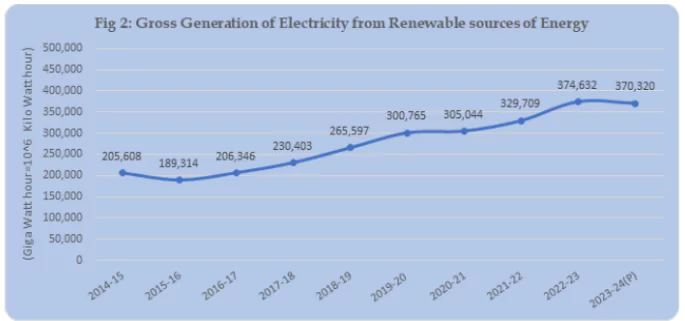![]() 1 Apr 2025
1 Apr 2025

The National Statistics Office (NSO) has released its annual publication “Energy Statistics India 2025”

 Reduction in Transmission and Distribution Losses: Electricity losses due to transmission and distribution decreased significantly from 23% in 2014-15 to 17% in 2023-24, reflecting improved energy efficiency.
Reduction in Transmission and Distribution Losses: Electricity losses due to transmission and distribution decreased significantly from 23% in 2014-15 to 17% in 2023-24, reflecting improved energy efficiency. Wind power dominates with 11,63,856 Megawatts (55%), followed by solar energy at 7,48,990 Megawatts and large hydro at 1,33,410 Megawatts.
Wind power dominates with 11,63,856 Megawatts (55%), followed by solar energy at 7,48,990 Megawatts and large hydro at 1,33,410 Megawatts.
<div class="new-fform">
</div>
